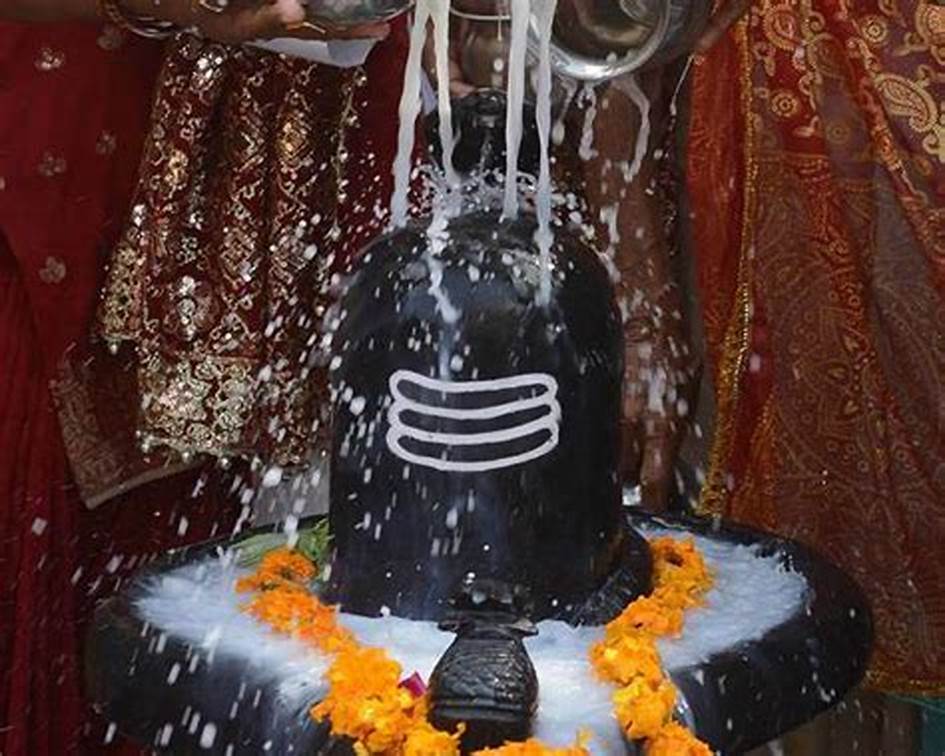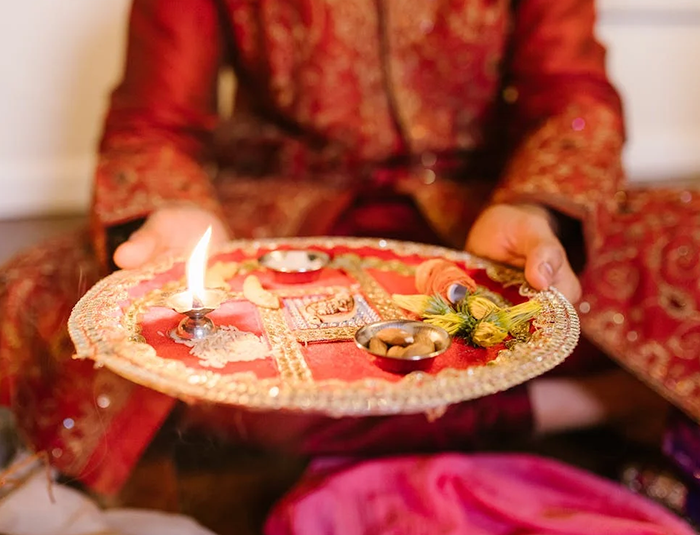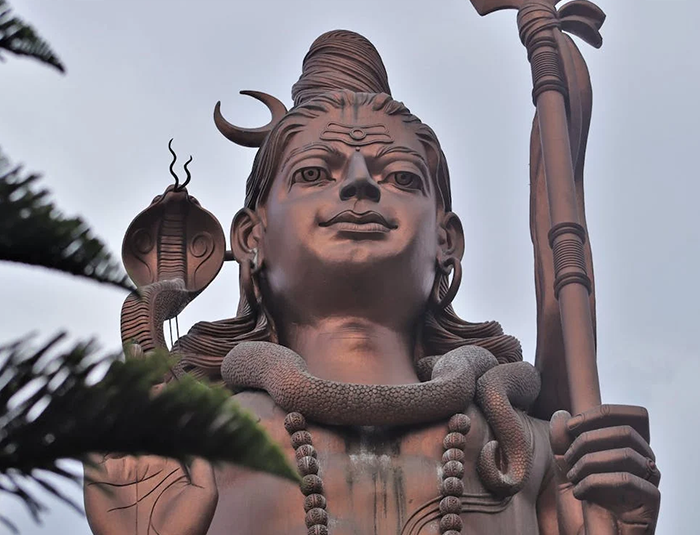Shiv Abhishek, also known as “Shiva Abhishekam,” is a Hindu ritual in which Lord Shiva is worshipped and honored by offering various substances as a way of seeking his blessings and divine grace. The word “Abhishek” in Sanskrit means “to bathe” or “to pour over,” and during this ritual, various sacred items are poured or offered over a Shiva Linga, which represents Lord Shiva. The ritual is often performed in temples and homes by devotees. Here are some of the common substances used in a Shiv Abhishek:
- Water (Jal Abhishek): Water from the Holy Ganges River or any other sacred water source is used to bathe the Shiva Linga. Devotees often chant “Om Namah Shivaya” while pouring water.
- Milk (Dugdha Abhishek): Milk is offered to symbolize purity and represents the nurturing aspect of Lord Shiva.
- Yogurt (Dahi Abhishek): Yogurt is a symbol of coolness and is offered to please Lord Shiva’s fiery nature.
- Honey (Madhu Abhishek): Honey is a symbol of sweetness and purity and is offered to seek the blessings of a harmonious life.
- Ghee (Ghrita Abhishek): Ghee (clarified butter) represents light and the removal of darkness. It is offered for enlightenment.
- Sugar (Sharkara Abhishek): Sugar is offered to seek the sweetness and joy in life and to remove bitterness.
- Bilva Leaves (Bilva Patra Abhishek): Bilva leaves, also known as Bel leaves, are considered highly sacred in Shiva worship. They are offered as a sign of devotion.
- Dhatura (Thorn Apple) Flowers: Dhatura flowers are considered sacred to Lord Shiva and are offered during the Abhishek.
- Vibhuti (Sacred Ash): Vibhuti, a sacred ash, is applied on the Shiva Linga and the devotees’ foreheads. It represents purity and the ephemeral nature of life.
- Rudraksha Beads: Devotees may offer Rudraksha beads, which are considered holy and associated with Lord Shiva, as part of the ritual.
- Coconut Water: The water from a coconut is offered to represent purity and fertility.
- Bael (Wood Apple) Juice: Bael fruit is highly revered, and its juice is used as an offering.
- Sandalwood Paste: Sandalwood paste is applied on the Shiva Linga and is believed to purify and cool the deity.
- Flowers: Various flowers, especially the lotus, are offered to please Lord Shiva.

Items required
- Abhisheka liquids – Water mixed with Gangajal, unboiled milk, Sugarcane juice and/or Coconut water.
- Punchamrit which is mix of unboiled milk , honey , sugar, ghee and curd.
- Water mixed with Ganges water in a achamani pot with Kusha grass for sprinkling and a spoon
- Dhoop, Incense sticks, Camphor, Ghee lamp
- Sandal paste , Aromatic oil .
- Rice grains
- Offerings – Sweets, Clothes, Flowers, Fruits, Betel nut, Bael Patra, Paan , Coconut
Number of Jap – Benefit of Jap
1 Rudram – Freedom from Baal Graha (diseases common to children).
3 Rudram – Freedom from imminent difficulties with which one is faced.
5 Rudram – Freedom from the evil effects of certain planets occupying unfavorable positions.
7 Rudram – Freedom from great fear.
9 Rudram – The fruit of one Vaajapeya sacrifice and also attainment of peace of mind.
11 Rudram – Getting the favor of kings and great wealth.
33 Rudram – Attainment of wishes for objects and having no enemies.
77 Rudram – Enjoyment of great happiness.
99 Rudram – Attainment of son, grandson, wealth, grain, Dharma, Arth, Kaam and Moksh and freedom from death.
1 Mahaa-rudram – Attainment of the favor of kings and becoming the Lord of great wealth.
3 Mahaa-rudram – Fulfillment of impossible tasks.
5 Mahaa-rudram – Acquirement of vast lands.
7 Mahaa-rudram – Attainment of the seven worlds.
9 Mahaa-rudram – Freedom from births and deaths.
10 Ati-rudram – Becoming God.
Various Shiva Abhishekam Benefits
Materials for Abhishek : Pure water, milk, sugarcane juice, lemon juic, ghee, honey, waters of sacred rivers, sea water, Kush water, rice powder, cooked rice, Panchaamrit, Panchgavya.
- Milk gives long life, freedom from diseases, and for begetting a son. It is believed that by doing Abhishek with milk, even a barren woman begets children.
- Ghee gives Moksh state
- Curd gives good children
- Honey gives melodious voice
- Rice powder frees from debts
- Sugar cane juice gives good health
- Panchaamrit gives wealth
- Lemon juice removes fear of death
- Sugar cane juice gives good health and removes enmity
- Tender coconut water gives enjoyment
- Cooked Rice (Annam) gives majestic life
- Sandal gives Lakshmi’s grace
- Water Abhishek gives rain.
- Kush water Abhishek – becomes free from all diseases.
- Sacred water gives Moksh
- Ghee, honey and sugarcane juice give wealth,
- Bilva Patra and flowers should be offered in Shiv Poojaa.








